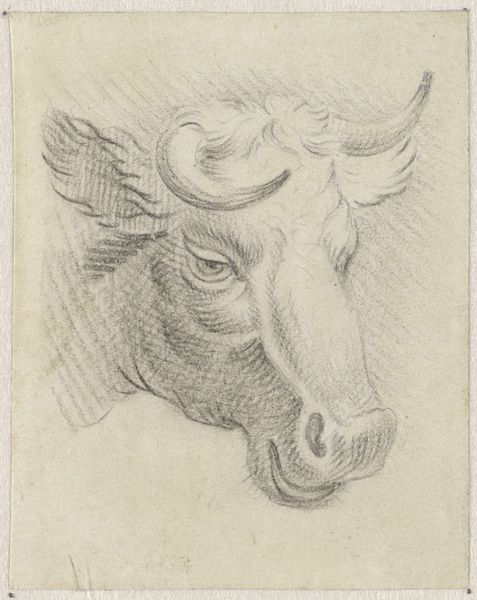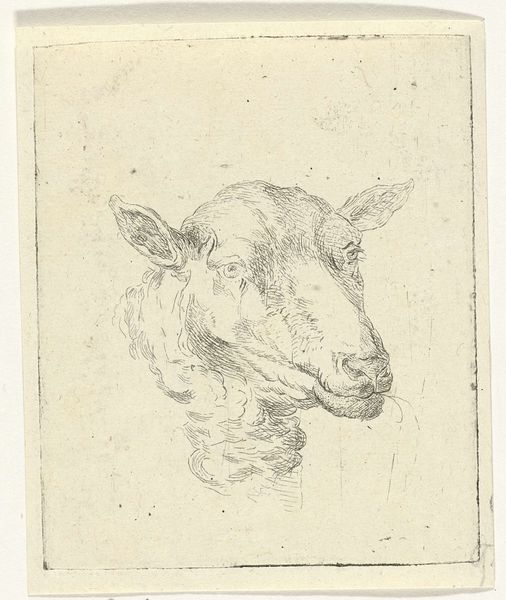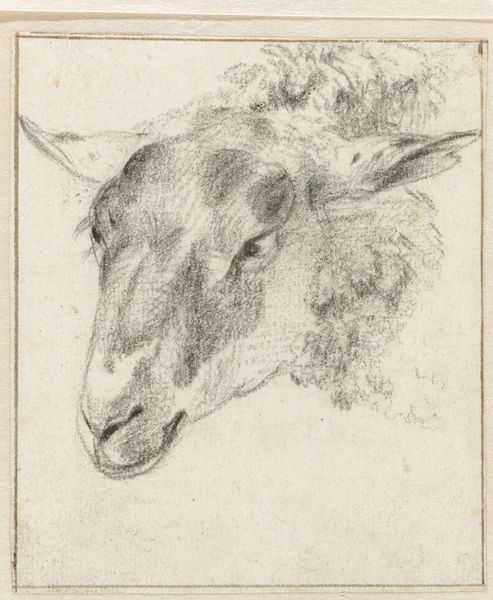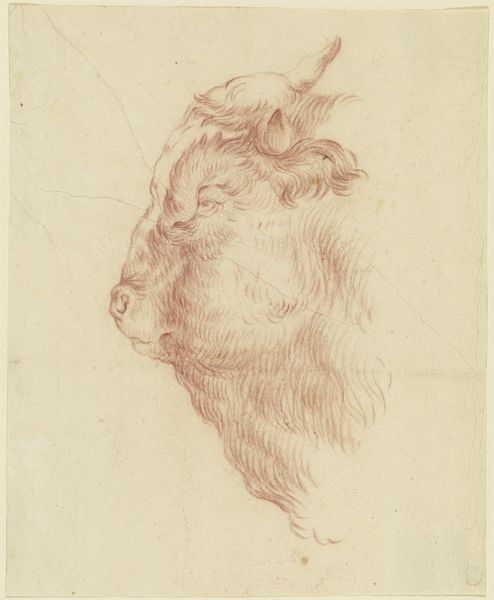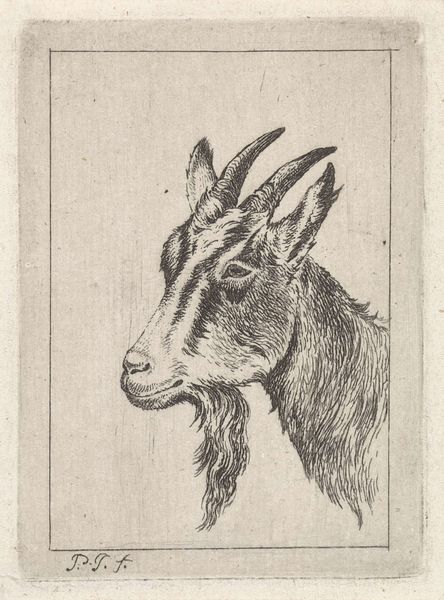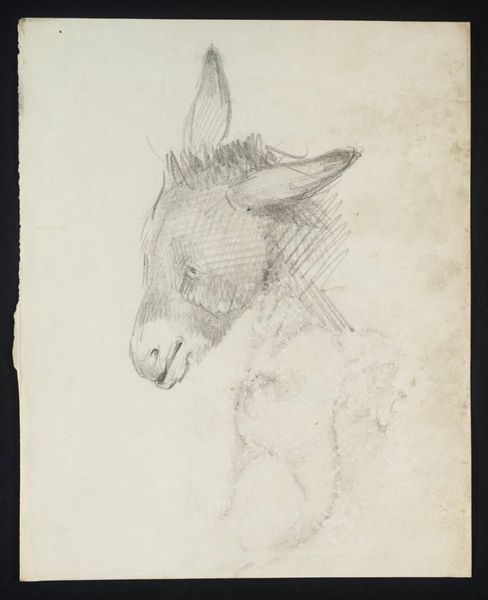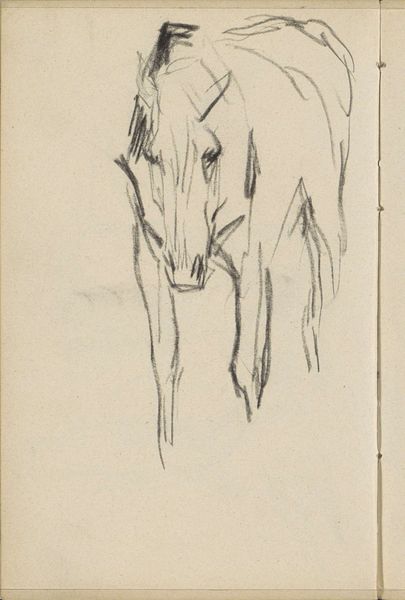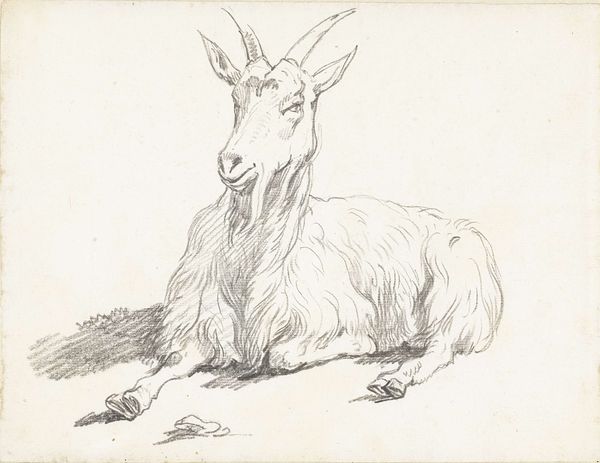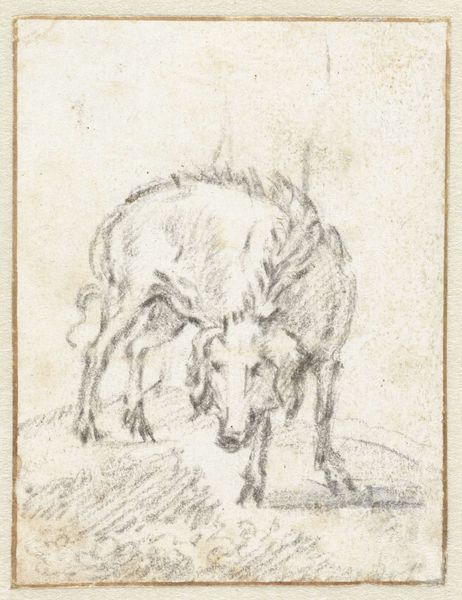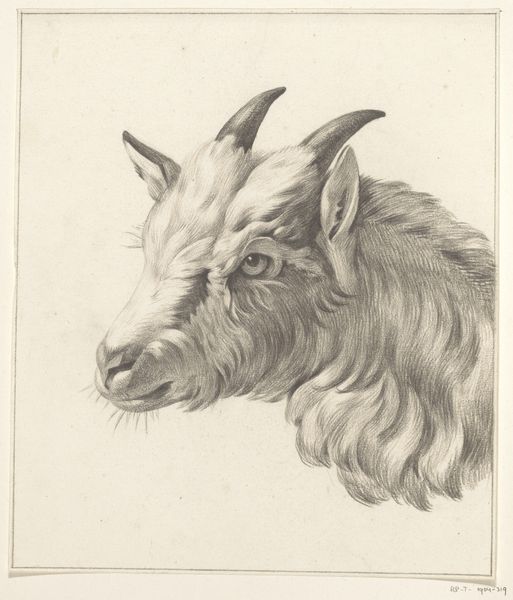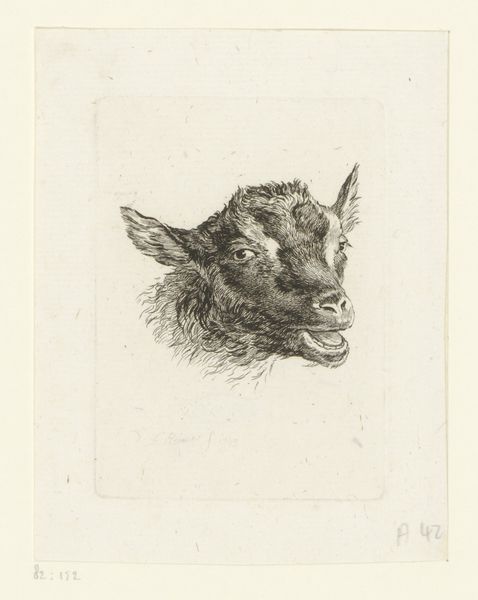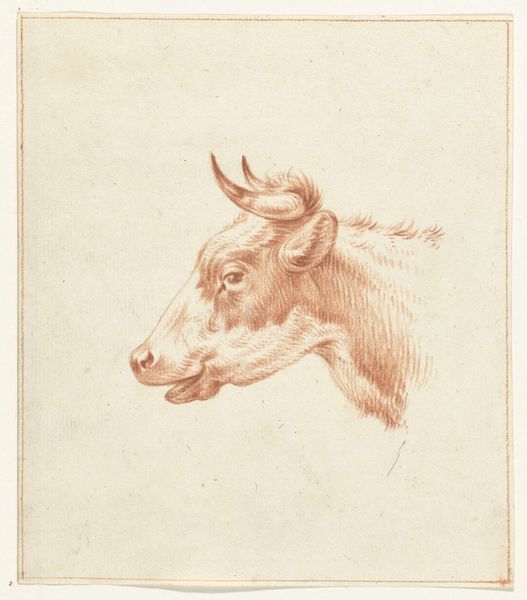
drawing, pencil
#
portrait
#
drawing
#
pen sketch
#
pencil sketch
#
pencil
Dimensions: height 96 mm, width 84 mm
Copyright: Rijks Museum: Open Domain
Editor: We're looking at "Geitenkop naar links," or "Goat Head, Facing Left," by Pieter Janson, likely made between 1780 and 1851, using pencil. It's such a simple, almost childlike sketch, yet there's a certain power to the image. What jumps out at you? Curator: The immediate thing is the raw materiality. Look at the visible tooth of the paper, the crude, almost hurried application of the pencil. This isn't about illusion; it's about the direct act of making. How does the use of readily available and inexpensive materials like paper and pencil influence our perception of the work and the artist's intentions? Editor: That’s a great point. It feels so immediate, like a fleeting observation captured on whatever was at hand. Almost like practice, you know? How does that inform, say, ideas of labor? Curator: Exactly! It asks us to consider the social context of artistic labor. Janson clearly has a facility with this medium. How might this drawing relate to his other work? Is it a study for something larger, more “refined”? Is he playing with or actively pushing against expectations for finished art? This piece, in its humble medium and apparent simplicity, challenges our pre-conceived notions of what constitutes 'high art' versus mere craft or labor. Do you see that? Editor: I do now. It's like he’s drawing attention to the process itself. It does make you wonder about the social status attached to different forms of artistic labor in that period. Curator: Precisely. The materials used and the manner of execution invite us to deconstruct the established hierarchies within the art world, think about artistic patronage. It wasn't made for the elites like formal portraiture on canvas might be. It lives on paper! Editor: This has completely changed my perspective on the piece! I initially saw it as a simple sketch, but now I see so much more about the context in which it was made. Curator: And hopefully prompts considerations on the material conditions of artmaking that extend to today.
Comments
No comments
Be the first to comment and join the conversation on the ultimate creative platform.
